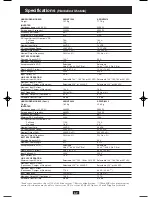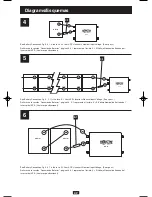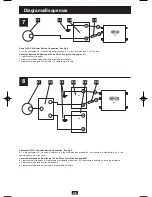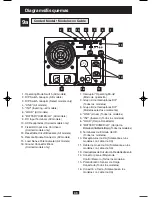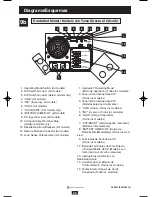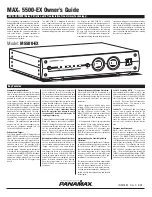
9
Battery Connection
1.
Connect your APS’s positive DC Terminal directly to a fuse.
Tripp Lite recommends that you install a recognized component fuse block and fuse within
18 inches of the battery. The fuse's rating must equal or exceed the Minimum DC Fuse
Rating listed in your APS model’s specifications on pages 16 or 17.
2.
Choose a battery configuration appropriate to your batteries.
• Single Battery Connection: Refer to Diagram 4, page 37. When using a single battery,
its voltage must be equal to the voltage of your APS’s Inverter Nominal Input Voltage
(see specs).
• Parallel Battery Connection: Refer to Diagram 5, page 37. When using multiple
batteries in parallel, each battery's voltage must be equal to the voltage of your APS’s
Inverter Nominal Input Voltage (see specs).
• Series Battery Connection: Refer to Diagram 6, page 37. When using multiple batteries
in series, all batteries must be equal in voltage and amp hour capacity, and the sum of
their voltages must be equal to the voltage of your APS's Inverter Nominal Input Voltage
(see specs).
3.
Use 2/0 gauge wire ONLY to make external battery connections. Tighten battery terminals
to a torque of 4 N-m.
Battery connection cable lengths should be short as possible, and must not exceed the Maximum
Cable Length listed under Specifications, page 16 or 17. Shorter and heavier gauge cabling limits
DC voltage drop and allows for maximum transfer of current.* You must tighten your battery
terminals to approximately 4 Newton-meters of torque to create an efficient connection and prevent
excessive heating. Insufficiently tightening terminals could void your PowerVerter’s warranty.
* APS models are capable of delivering a much higher wattage output for brief periods of time. Wiring should be
configured to handle this brief high-current draw. Though your APS is a high-efficiency converter of electricity, its rated
output capacity is limited by the length and gauge of the wires running from the battery to the APS.
APS systems may be permanently mounted in a car, truck or boat and connected to draw power from
the vehicle’s battery.
Note: An APS can ONLY be connected to vehicle batteries with voltage
that matches the APS’s Nominal DC Input—12V vehicle batteries to 12V Nominal DC
Input APS systems, etc. (See Specifications).
There are two main ways to make this sort of
vehicular battery connection. Choose the Basic Connection if you are running light hand tools or
other small appliances for a brief period of time
(see Diagram 7, p. 38)
. Choose the Advanced
Connection if you are using your APS to power heavy loads for extended periods of time
(see
Diagram 8, p. 38).
The Advanced Connection incorporates a battery isolator and separate battery
system to provide battery power to your APS while preventing it from draining your vehicle’s
battery. Note: Depending on your application, you may require more than one Deep Cycle Battery.
Caution: Never operate your APS from an alternator without a battery connected as shown in Diagrams 7 or 8, p. 38.
Standard
DC Vehicular
200106010 230V APS Owners Manual.qxd 1/3/02 5:18 PM Page 9

















